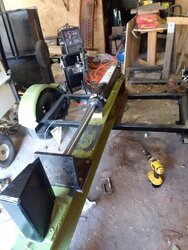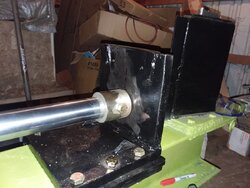Hello Everyone,
I've been collecting parts and am about ready to start piecing together my log splitter. However I noticed a few things looking at other peoples designs that I was hoping someone would be able to provide some clarification on.
First I don't commonly see the cylinder lying directly on the I-beam. Is there a reason for this that I'm missing?
Secondly I was going to weld up a reservoir for the hydraulic fluid from some sheet metal but realized, while I could paint the outside I wouldn't really be able to prevent rust on the inside of the tank. Has anyone else here dealt with this?
I've been collecting parts and am about ready to start piecing together my log splitter. However I noticed a few things looking at other peoples designs that I was hoping someone would be able to provide some clarification on.
First I don't commonly see the cylinder lying directly on the I-beam. Is there a reason for this that I'm missing?
Secondly I was going to weld up a reservoir for the hydraulic fluid from some sheet metal but realized, while I could paint the outside I wouldn't really be able to prevent rust on the inside of the tank. Has anyone else here dealt with this?




